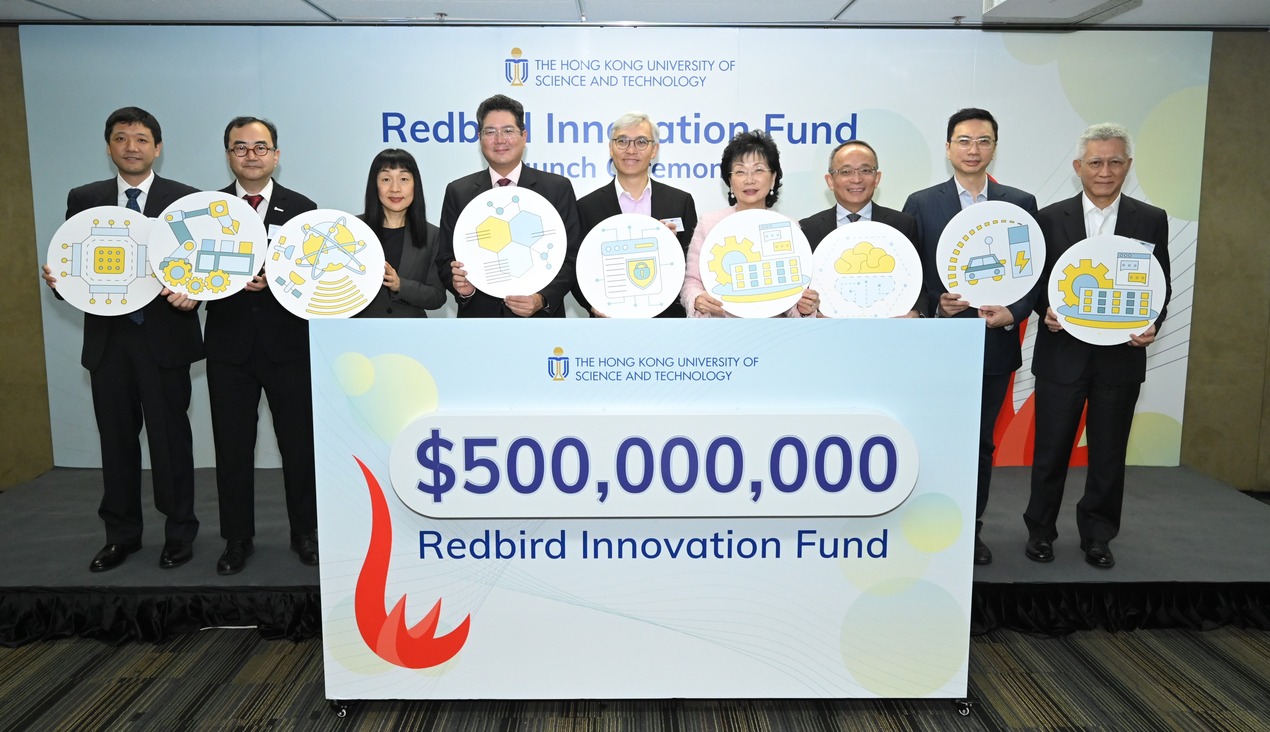
Two research teams at The Hong Kong Polytechnic University (PolyU) contributed to the Nation’s first Mars exploration project Tianwen-1. By harnessing their extensive experience in the field of aerospace science and technology, as well as their commitment to research excellence, PolyU researchers played a vital role in the Tianwen-1 mission, in collaboration with the China Academy of Space Technology (CAST).
Professor WU Bo helped identify possible landing regions with advanced topographic mapping and geomorphological analysis technologies. Professor YUNG Kai-leung developed a sophisticated space instrument, the “Mars Landing Surveillance Camera (Mars Camera)”, for capturing images of the surroundings of the Red Planet and monitoring the status of the Zhurong Mars rover.
The spacecraft for the Tianwen-1 probe comprises an orbiter, a lander and the Zhurong rover, aiming to complete orbiting, landing and roving in one single mission, which is the first such attempt in global aerospace history. The mission aims to obtain scientific exploration data on the Red Planet, and currently, Tianwen-1 has completed orbiting Mars and has successfully landed on a pre-selected landing region on the Utopia Planitia of Mars. The Mars rover Zhurong is also due to begin Martian exploration.
PolyU’s President noted that by leveraging the achievements of PolyU in the field of aerospace technology, the University has decided to increase its support in this area by establishing the University Research Centre for Deep Space Explorations led by Professor Yung Kai-leung.
The aim is to pool together experts in different fields such as Geology, Architecture, Machinery, Physics, and Remote Sensing to conduct in-depth research in different aspects of aerospace technology.
Mars landing site mapping and evaluation
Landing on Mars is a challenging endeavour for several reasons including Mars’ complex surface, a very thin atmosphere and possible dust storms. There is also a 5-20 minutes time delay between Mars and Earth communications. It is therefore of paramount importance to select a landing site that is safe and of scientific significance.
From 2017-2020, upon invitation by CAST, Professor WU Bo from PolyU’s Department of Land Surveying and Geo-Informatics led a team to carry out global-scale analysis and evaluation to help shortlist three candidate landing regions that have adequate solar illumination for optimised power generation and moderate temperature, lower elevation for longer deceleration time, and a flat terrain surface for a safe landing.
The team further conducted detailed topographic and geomorphological mapping and analysis of the candidate landing regions, including their elevations, slopes, rock abundances, crater densities, and geological contexts. As a result of the evaluation, a region in the southern Utopia Planitia (a region on Mars), the largest recognised impact basin in the northern hemisphere of Mars, was selected as the target landing region.
Since entering the orbit of Mars on 10 February 2021, the Tianwen-1 probe has collected and sent back a large quantity of sub-meter-resolution images of the target landing region.
Using the high-resolution images from Tianwen-1, Professor Wu and his team generated high-resolution and high-precision 3D digital topographic models of the target landing region using the self-developed integrated 3D mapping model, to analyse the detailed topography and identify large slopes hazardous for landing.
To facilitate safe landing and roving on Mars, the team also developed AI-based techniques for more automated and robust analysis of geomorphological features like craters and rocks from the high-resolution images in a short period of time.
Professor Wu said that using AI-based techniques, the team analysed over 670,000 craters, over two million rocks, and hundreds of volcanic cones distributed over the target landing region in 1.5 months. They achieved much higher efficiency in the automatic extraction of rocks and craters with about 85% correctness.
From the topographic and geomorphological mapping results, the team successfully identified several landing ellipses for the mission management team to finalise the landing site.
Mars Landing Surveillance Camera (Mars Camera)
With a wealth of experience in developing sophisticated space instruments, Professor Yung Kai-leung, PolyU’s Sir Sze-yuen Chung Professor in Precision Engineering, Chair Professor of Precision Engineering and Associate Head of Department of Industrial and Systems Engineering, has led a team to undertake the research, design and manufacturing of the Mars Camera since 2017.
The PolyU-developed Mars Camera is located on the outside top surface of the lander platform, for monitoring the landing status, the surrounding environment of Mars and the movements of the Zhurong rover with respect to the unfolding and status of the solar panels and antennae. This information is critical for the successful movement of the Mars rover on the surface of Mars.
The Mars Camera is light in weight (around 390g), yet strong and durable enough to withstand the extreme temperature differences of about 150 degrees Celsius experienced during the nine-month journey between Earth and Mars, followed by immediate operation under the extremely low temperatures on the surface of Mars.
As the Mars Camera is designed for the lander, it also has to withstand huge impact shocks of 6,200G (i.e. 6,200 times the force of Earth’s gravity). Despite having a wide-angle field of view (a maximum of 120 degrees horizontally and a maximum of 170 degrees diagonal), the Mars Camera has low image distortion.
Professor Yung explained, “To capture ultra-wide-angle images on Mars for scientific research, the Mars Camera has to have a wide field of vision with low distortion optics within the little allowable payload, but at the same time must also be able to withstand extreme temperature variation, high radiation, mechanical impact and vibration within the little available mass, whereas maintaining high reliability under the extreme space travel environment such as high radiation.”
















